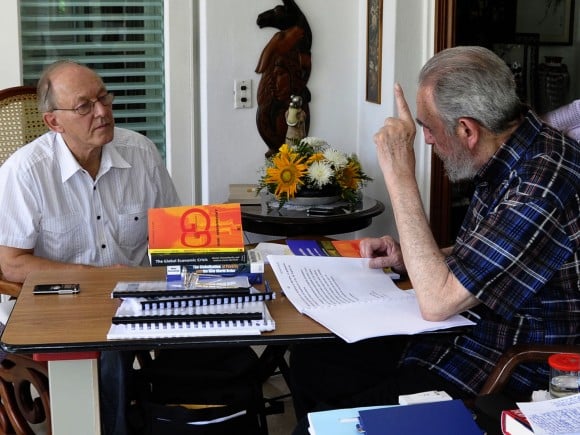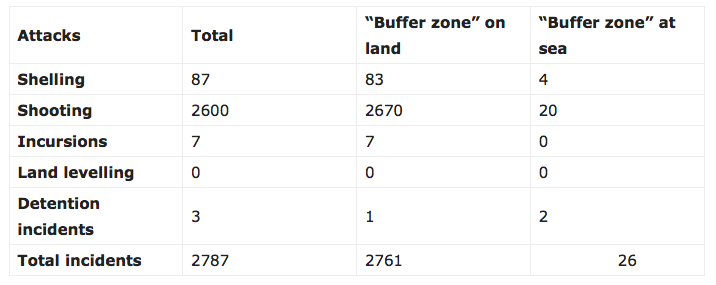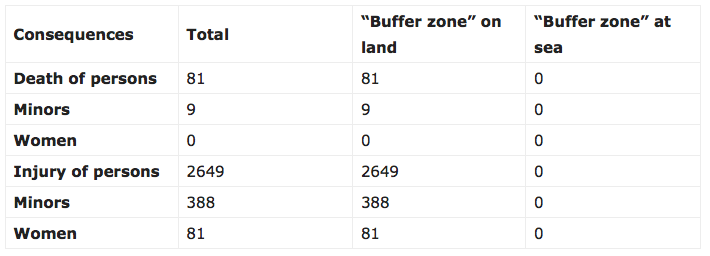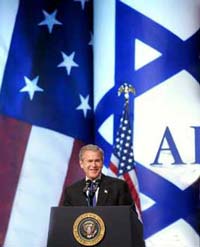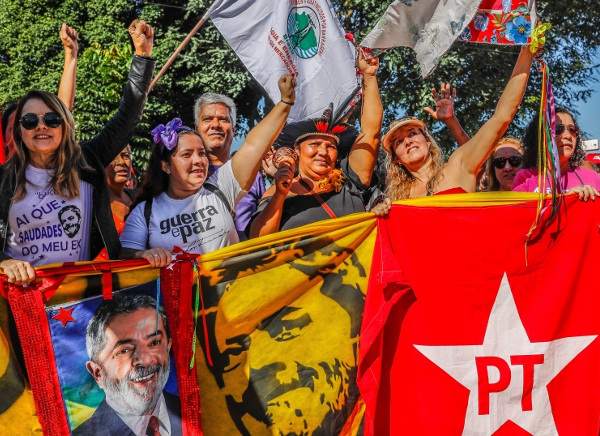Relevant article first published on December 6, 2015.
The following article was presented in Berlin, Germany at the Second International Symposium on Peace and Prosperity in Korea on November 25, 2015. The paper deals with Northeast Asian security from a broader global lens where Northeast Asia and the Korean Peninsula are strategically interlocked to the other regions of Eurasia.
The US has pushed for the destabilization of the countries and economies of these regions in Europe and Asia. In this regard, the division of the Korean Peninsula and the threat of a nuclear war igniting between Pyongyang and the US are directly tied to Washington’s “active program of forceful intervention to prevent European or Asiatic unification” in Eurasia that has ushered the “Pivot to Asia” and the militarization of Japan and the Asia-Pacific as part of Washington’s strategy to encircle China.
Themes of security in Northeast Asia and the Korean Peninsula cannot be viewed as secluded issues from the rest of Asia, the Eurasia landmass, and, even more broadly, the rest of the world.
Northeast Asia’s security and Korean security must be examined within the framework of the international rivalries and power politics taking place between the so-called “Great Powers.” Therefore, Northeast Asian and inter-Korean security must be analyzed in consideration of the United State of America’s “Asian Pivot” or “Pivot to Asia” and Washington’s strategic objectives vis-à-vis the People’s Republic of China and the geopolitical shift(s) being brought about by Eurasian integration and Beijing’s New Silk Road(s) (or “One Belt, One Road”) policy.
Examining the Asia-Pacific
Although there is a plethora of different definitions for the Asia-Pacific region, Northeast Asia and the Korean Peninsula are part of this broader region that may either include or exclude the Pacific countries of the Americas, Oceania (including the region of Australasia), Russia, and all of Asia. The Asia-Pacific is roughly analogous to the Pacific Rim. This is why the Asia-Pacific Economic Cooperation (APEC) forum, which was established in 1989, includes the United States, Canada, Mexico, Chile, and Peru as members.
Northeast Asia and specifically the Korean Peninsula are strategically important for the US strategy in Eurasia, which is influenced by the US strategist Nicolas Spykan’s containment theory about the Rimland. US Pacific Command (USPACOM) was formed on this basis of this too.
Empirically, these unified combatant commands and the strategic fronts they support are aligned with classical Cold War containment doctrine and with its underlying doctrine of strategic incursion, which became visible in the post-Cold War era tied to the master of containment theory Nicholas Spykman’s concept of the Eurasian Rimland. Spykman’s work builds on Halford Mackinder’s calls to create a shatter-belt around the Eurasian Heartland and amidst Germany and Russia from the Baltic to the Aegean Seas. Spykman was one of the figures in the US that aligned containment with incursion—making US defensive strategy effectively strategically offensive. Spykman argued that relying on isolationism, based on reliance on the oceans as a protective barrier to invasion, was bound to fail (Nazemroaya 2012:270).
In an introduction to Spykman’s work, Frederick Sherwood Dunn explains that Spykman’s strategy has prompted the US government to adopt “an active program of forceful intervention to prevent European or Asiatic unification” (Ibid.:271). This is the rationale behind the partition of Germany in 1945. “Any proposal for the unification of Europe would tend to put [Europe] in a subordinate position to Germany (regardless of the legal provisions of the arrangement) since Germany, unless broken up into fragments, will still be the biggest nation on the continent,” Dun explains (Ibid.) He summarizes this by stating:
The most important single fact in the American security situation is the question of who controls the rimlands of Europe and Asia. Should these get into the hands of a single power or combination of powers hostile to the United States, the resulting encirclement would put us in a position of grave peril, regardless of the size of our army and navy. The reality of this threat has been dimly realized in the past; on the two recent occasions when a single power threatened to gain control of the European mainland, we have become involved in a war to stop it. But our efforts have been belated and have been carried out at huge cost to ourselves. Had we been fully conscious of the implications of our geographical location in the world, we might have adopted a foreign policy which would have helped to prevent the threat from arising in the first place (Ibid).
It is in this context, Northeast Asia is viewed by US strategists as a bridgehead of power projection into the Eurasian landmass from its eastern periphery. Japan, like Britain on the western side of Eurasia, is viewed as a base of sea or oceanic power for the US. Korea on the other hand is viewed as Washington’s eastern perch into Eurasia. This is part of a longstanding US strategy that even predates the Cold War, which saw the US government encourage the Japanese to invade Korea in 1905.
In 2011, US Secretary of State Hillary Clinton announced that Washington was going to begin concentrating on East Asia and the Asia-Pacific region. Because of an article titled “America’s Pacific Century” that Hillary Clinton authored for the international relations magazine Foreign Policy, this US policy popularly became known as the “Pivot.” She argued that “Asia is critical to America’s future” and that the world’s balance of power would be decided in East Asia, and not Afghanistan, Iraq, or Southwest Asia (Clinton 2011). “One of the most important tasks of American statecraft over the next decade will therefore be to lock in a substantially increased investment — diplomatic, economic, strategic, and otherwise — in the Asia-Pacific region,” she concluded (Ibid.). This is why the US would recalibrate and redirect its attention and resources towards East Asia.
Two years later, a report authored by the British think-tank Chatham House described Washington’s redeployment efforts in the Asia-Pacific region like this: “The United States government is in the early stages of a substantial national project: reorienting significant elements of its foreign policy towards the Asia-Pacific region and encouraging many of its partners outside the region to do the same” (Andrews and Campbell 2013:2). “The ‘strategic pivot’ or rebalancing, launched four years ago, is premised on the recognition that the lion’s share of the political and economic history of the 21st century will be written in the Asia-Pacific region,” the Chatham House report points out (Ibid.). In one way or another, what this analysis insinuates is that the nation that controls the Asia-Pacific region will be dominate globally.
The Chinese view Washington’s “Pivot to Asia” as a containment policy directed against them. As Clinton (2011) wrote in her article, “China represents one of the most challenging and consequential bilateral relationships the United States has ever had to manage.” In fact, aside from the Korean Peninsula, one of the two areas that the US has repeatedly designated as a security concern in the Asia-Pacific region is the South China Sea, which directly involved territorial claims and disputes between Beijing and Brunei, Indonesia, Malaysia, Singapore, the Philippines, and Vietnam.
The US has been busy consolidating a military and security network in the Asia-Pacific that targets Beijing and which is part of its broader goal of subordinating China (Nazemroaya 2012: 175-191, 268-278, 343). Characteristically, this has been executed regionally by the US through a misleading approach. The militarization of the Asia-Pacific region is taking place under the banners of peace and stability the region. The region is actually being destabilized by both its increased militarization and by the the stoking of tensions in the South China Sea and the Korean Peninsula by the United States.
While Beijing prefers diplomacy and dialogue over territorial disputes, it has been forced into taking a defensive posture in its littoral zones in the South China Sea and East China Sea. The People’s Republic of China announced the establishment of the East China Sea Air Defence Identification Zone (ADIZ) in the East China Sea in November 2013. Despite the fact that the US and its allies had all setup air defence zones decades before China, the response of Washington and its allies was to portray the move as an act of Chinese aggression and militarism. The Pentagon even deliberately and defiantly flew two B-52 bombers over the newly established ADIZ.
It is important to note that “China’s establishment of the zone is conducive to identifying aircraft and thus avoiding unexpected frictions, but takes on another implication in public opinion” (“B-52’s defiance”) In other words, the antagonism over the Chinese ADIZ is manufacturing tensions and being used to demonize Beijing in public opinion. Additionally, according to the Global Times (Ibid.), the Chinese ADIZ has triggered “a political row over the East China Sea because it overlaps with the Japanese ADIZ over the Diaoyu Islands.”
Washington Vilifies Pyongyang to Target Beijing
On November 15, 2014, in parallel to the Group of Twenty (G20) Summit in Brisbane, US President Barack Obama delivered a keynote speech to diplomats, policymakers, faculty members, and students at the University of Queensland Washington’s on policy in the Asia-Pacific. In his speech, Obama warned potential aggressors to never question the resolve or commitment of Washington to its regional allies in East Asia and Oceania. Although President Obama did not emphasize this directly or too much, everyone knew which countries he was talking about, and the media vividly filled in the blanks. While President Obama directly named the nuclear program and missile arsenal of the Democratic People’s Republic of Korea (DPRK) as a regional threat in the Asia-Pacific region, he was careful in how he talked about the People’s Republic of China. Beijing was mentioned casually in terms of regional territorial disputes. Reference to Russia was short too. The Russian Federation was only named once and briefly when President Obama said the Russians were a threat to the world because of their actions in Eastern Europe, specifically Ukraine.
It is with the above understanding that the billing the mainstream media narrative gave to Obama’s University of Queensland speech was one that understood Washington’s commander-in-chief was talking tough against Beijing, Moscow, and Pyongyang, as the Asia-Pacific’s rogues. Unlike Obama’s speech, the names of these three countries were repeatedly named and more openly demonized in the media reports about the G20 Summit in Brisbane and Obama’s speech at the University of Queensland. Beijing, Moscow, and Pyongyang were either directly or tacitly been portrayed as some type of “Axis of Evil” in the Asia-Pacific region.
China was mentioned seventeen times throughout the body of the speech while the DPRK was mentioned twice and Russia once (Obama 2014). Even though Beijing was not directly or openly called an adversary in the speech, it was clear that the main US concern in the Asia-Pacific region is the Chinese. In reality, President Obama’s message was a US call to arms against the Chinese, which along with the Russians are Washington’s main global adversaries or rivals. US Secretary of Defence Ashton Carter would make an omission of this on November 5, 2015; Carter would say that both the Chinese and Russians are endangering the US-dominated world order.
Although Pyongyang was thrown into the equation by Obama, the DPRK is merely a pretext for Washington to station the Pentagon’s forces and US nuclear assets in Northeast Asia and the southern portion of the Korean Peninsula and Japan. The objective of this is to target Beijing from its eastern seaboard, like Washington’s “Pivot to Asia” does. Under the justification of protecting Washington’s clients in the Republic of Korea (ROK), the Pentagon maintains Marines, soldiers, airmen, and sailors on standby for a nuclear war in the Korean Peninsula and Japan.
The US even has control over the ROK Armed Forces. Syngman Rhee, who was selected by the Pentagon to become the president of the ROK and flown into Seoul by the US military from Tokyo after the surrender of Japan in the Second World War, placed the ROK’s military under US control. Formally, the ROK would get control of its own military only by December 1994, but the US would maintain its influence and have undisputed control in the event of a war on the Korean Peninsula and in Northeast Asia (Su 2012:159). It was understood that in the event of a war that Washington will give the ROK military general command in Seoul their orders through the Pentagon. When this agreement was first revealed to the Korean people and world, it was said that this military arrangement between Washington and the ROK was not meant to last. It was supposed to be a Cold War precaution against the threat of a war with the DPRK that would only last until Seoul was ready to take charge of its own military affairs and security. Since then there has been anger and continuous protest by a vast spectrum of the Korean population in the ROK about the agreement giving the US operation command (OpCon) over the ROK’s military forces in a war. It has even become a campaign issue in South Korean politics.
The ROK-US agreement on operation command’s existence can only be justified through the continued vilification of the DPRK as a military threat to the ROK. With inter-Korean political dialogue and attempts at rapprochement between the DPRK and ROK, it has become harder to justify US control over the ROK’s military forces. In order for the agreement to continue, the DPRK has to be perceived as a threat and irrational. This is why there is an interest to depict the DPRK and its government as threats in the ROK.
In 2015, operational control was supposed to be transferred from the US back to the ROK. In October 2014, however, Washington and the ROK agreed to scrap “a long-standing time frame for Seoul to take control of its military in the event of war” in the Korean Peninsula (Schwartz). It was declared that the security question of operational control would be postponed until the mid-2020s. While it initially tried to ignore the issue, the Blue House in Seoul was forced to respond to public anger over the delay and violation of ROK President Park Geun-hye’s campaign promise to transfer wartime operational control of the ROK military from the Pentagon to Seoul. “This is something that should be viewed rationally and realistically from the perspective of national security. It is not a violation of Park’s campaign pledge,” the Blue House’s spokesperson Min Kyung-wook argued (Seok and Park). In November 12, less than a year earlier, Park had pledged during a press conference for her presidential election campaign to prepare for the OpCon transfer without delay if she was elected as the president of the ROK (Ibid.).
The US does not want to surrender operational command of Seoul’s armed forces for strategic reasons tied to its regional approach:
If one of the unstated goals of the United States in South Korea is to have a strong presence in mainland Northeast Asia, beyond countering the DPRK and to perhaps balance China, then handing over OPCON makes the purpose of US troops deployed to South Korea a question for foreign observers. By recognizing the capacity of the ROK military in wartime, the OPCON transfer might encourage Beijing to wonder just what, or whom, the US military presence on the Korean peninsula (in addition to US bases in Japan) is geared toward. If the United States hopes to stay in the region and is using the continuing ROK-DPRK conflict as a crutch, then the OPCON transition would undermine the US argument for staying in South Korea (Su 2012:168)
Pyongyang and Beijing both are cognizant of this. In this context, it is not just the DPRK alone that views US military operations, exercises, and operational control in the Korean Peninsula as a threat. Beijing does too.
Chinese strategists understand that the DPRK is being demonized and targeted as an excuse for the US to keep its forces adjacent to mainland China. Like the disputes in the South China Sea, this is also why inter-Korean tensions are being promoted. By the same token, this was also the basis for the eventual Chinese intervention against the US military during Korea’s Liberation War in 1950, albeit China intervened unofficially by sending the People’s Volunteer Army. The Chinese intervened in the Korean Peninsula in 1950, because they did not want US troops directly on their border and in close proximity to Beijing. Aside from their historically close political and military relationship (in what is called their “blood ties”) with Pyongyang (Ong 2002:57-58), Chinese leaders realized that the DPRK was and still is a stepping stone towards the US goal of encircling, destabilizing, and eventually neutralizing the People’s Republic of China.
Realizing what the strategic objectives of the US are in Northeast Asia, the Chinese and the Russians have continuously worked to prevent a confrontation in the Korean Peninsula from occurring by mediating in the tensions that the DPRK has with the US and the ROK’s authorities. As the US continues its military buildup in the Asia-Pacific, the Russian military and Chinese military have begun coordinating joint large-scale aerial, land, and naval exercise to enhance their cooperation and preparedness. Moscow is also strengthening its ties with Pyongyang.
The Militarization of the Asia-Pacific Region
The Asia-Pacific region has steadily militarized in recent years. Steady streams of US Marines have been deployed to Australia and Southeast Asia while Washington’s military and security alliances with Australia and Japan are being deepened. The Australian Defence Ministry has talked about a regional arms race and issued reports on increased Chinese military spending and naval expansion while the Japanese government continually talks about the DPRK and China as military threats. Never once is it mentioned that the Chinese naval expansion and Beijing’s increased military spending are reactions to US militarism and Washington’s attempts to encircle the Chinese. China is acting defensively and trying to secure the Indian Ocean’s maritime trade routes and energy corridors from the US, because it fears the US could block them in the scenario of a confrontation (Nazemroaya:175-191).
Australia, Japan, and the ROK form key components of the US strategy against China (Ibid.:252-265). They are all part of the global missile shield system targeting the Chinese and Russians, which the US initially justified erecting using the demonization of the DPRK and Iran. Australia, Japan, and the ROK are homes to US-led rapid response military forces that are configured for immediate military action should a war ignite with China, Russia, and the DPRK. The policies of Canberra, Tokyo, and Seoul have also begun to radically change as they harden themselves as frontline states next to or near the Chinese (Ibid.). For example, the strategic aim of the Pentagon to encircle and contain China has encouraged successive Japanese governments to turn their backs on the Japanese Constitution, specifically Article 9, by re-arming Japan in an offensive context. Despite the objections and anger of many Japanese citizens and many more Asian societies, Tokyo has violated and breached the framework of its constitution by militarizing.
There is very little question that Japan is a full partner with Australia, the US, Singapore, and the North Atlantic Treaty Organization (NATO), against Beijing, Moscow, and their partners. In 2007, Japan signed its second post-Second World War bilateral security agreement. The first one was with the US, but the 2007 agreement was with the Commonwealth of Australia. This was the beginning of the Australia-Japan-US Trilateral Security Dialogue. The security agreement led to the eventual signing of the Japan-Australia Acquisition and Cross-servicing Agreement (ACSA) on 19 May 2010, which allows for the pooling and sharing of military resources by both Canberra and Tokyo. In 2015, for the first time ever, the Japanese joined the Australians and the US in their biennial Talisman Sabre military exercise as a dress rehearsal for conformation with the Chinese (Schogol).
As for Australia, it has had a steady stream of secret deals and talks with the US government and the Pentagon. The deal signed between the Australian and US governments over the Pentagon intelligence facility and signals base in Geraldton followed years of secretive discussions between both sides. In 2011, Australian Prime Minister Julia Gillard and her government allowed the US to deploy troops on Australian territory after a series of secret and public discussions. Gillard’s deal with the Pentagon was unwelcomed by the Chinese and seen as the first significant expansion of the Pentagon into the Asia-Pacific region since the Vietnam War. In 2013, the Chinese told the governments of Australia, Japan, and the US not to use their regional alliance to inflame local tensions any further or to instigate hostilities in East Asia by interfering in bilateral territorial disputes in the East China Sea and South China Sea (Ruwitch). As recently as 2015, a Chinese news outlet editorial said that a war with the US would be “inevitable” if the US continued its posture in the South China Sea (Ryall quoting Global Times).
The integration of Australia and Japan into a US-led military front against China and Russia has not only included the formation of the Australia-Japan-US Trilateral Security Dialogue. The creation of this Washington-led front includes NATO as a key feature of the strategy of militarily encircling all Eurasia. It is in this context that the accession of both Canberra and Tokyo, alongside New Zealand, the ROK, and Colombia, as NATO partners has occurred. These NATO partnerships are referred to by NATO Headquarters and the North Atlantic Council as NATO’s “global partners” program. Mongolia, post-2003 Iraq, and NATO-garrisoned Afghanistan are also partners of the NATO program. NATO has also created different partnership programs that include countries like Qatar, the United Arab Emirates, Bahrain, Jordan, Israel, Egypt, Morocco, Tunisia, the Republic of Georgia, Kuwait, Bosnia, and Mauritania.
The hardening lines being created, specifically with the instigation and agitation of the United States, are destabilizing factors in the international arena. This threatens to turn Europe and the Asia-Pacific region, including Northeast Asia, into war theatres. These regions could be theatres of a global confrontation or start off as theatres of regional wars that quickly escalate into broader hot wars.
Korea and the Global Multi-Spectrum War
The Cold War was more than an ideological struggle. Ideology was merely utilized as a justification for foreign policy and unacceptable actions. The divisions that were perceived to have existed during the Cold War did not or have not disappeared either, because the struggle fuelling the Cold War did not really end. In reality, there has been a “post-Cold War cold war” or a cold war after the Cold War. Over the years it has become increasingly clear that the divisions that existed in the Cold War have been carried on and merely transformed. Those divisions have slowly re-emerged and are displaying themselves again.
The specter of a nuclear war has not disappeared either. The US and its NATO allies “have always deemed the [Nuclear Non-Proliferation Treaty (NPT)] to be null and void in the scenario of a world war” (Nazemroaya 2012:374).
In essence the NPT is nothing more than a convenient means of holding sway over non-nuclear states and insuring a partial US and NATO nuclear weapons monopoly to insure their dominance over other states; the moment that dominance fades, the US and NATO have no qualms in being unequivocal treaty violators as they themselves have warned (Ibid.:347-348)
In violation of the NPT, the US has even threatened to attack the DPRK and Iran with nuclear weapons. This is because Obama “redefined Washington’s NPT commitments in April 2010 by declaring that the” US government would violate “the NPT’s provision which barred a nuclear attack on certain non-nuclear states, meaning Iran and North Korea” (Ibid.:346). Although the DPRK is not legally obligated by the NPT since it cited the NPT’s Article 10 to withdraw on April 10, 2003, Washington’s justification for this was that it had unilaterally and illegally decided that both Iran and the DPRK were in noncompliance with the NPT.
In 2001, the Nuclear Posture Review (NPR) acknowledged that the US had nuclear missiles pointed for an attack on Iraq, Libya, Syria, Iran, China, Russia, and the DPRK at all times. Since the Anglo-American invasion of Iraq and the NATO war on the Libyan Arab Jamahiriya, the US continues to maintain nuclear weapons pointed at the DPRK, Iran, Syria, Russia, and China. In 2006, the Pentagon even launched a war game called Vigilant Shield 07 that simulated a nuclear attack on Iran, Russia, China, and the DPRK, respectively codenamed Irmingham, Ruebek, Churya, and Nemazee.
Like Russia and China, this is why the DPRK maintains its nuclear weapons as a strategic deterrence against the US. The nuclear factor also makes the signing of a formal peace treaty to officially end the Libration War between the US and the DPRK of great consequence to Eurasian and global security, because a conflict in the Korean Peninsula could escalate into a nuclear war with immediate global ramifications that would draw in China, Russia, Japan, and NATO.
The threat of nuclear confrontation has actually increased, because there is less pressure for constraint on public officials due to the fact that the general public is less aware of the nature of global rivalries and the dangers of nuclear escalation. This is directly tied to the role of the mass media and the information strategies of governments.
A chain of US-controlled alliances are being constructed and equipped around three main actors, China, Russia, and Iran—the “Eurasian Triple Entente.” In this context, the following was averred in 1997:
But if the middle space rebuffs the West, becomes an assertive single entity, and either gains control over the South or forms an alliance with the major Eastern actor, then America’s primacy in Eurasia shrinks dramatically. The same would be the case if the two major Eastern players were somehow to unite (Brzezinski 1997:35).
Camouflaged behind thinly veiled liberal and academic jargon, what Zbigniew Brzezinski—the man making these statements—meant was that if the Russian Federation and the post-Soviet space manage to repulse or push back Western domination—meaning some combination of tutelage by the US and its allies—and manage to reorganize themselves within some type of confederacy or supranational grouping, either gaining influence in the Middle East and Central Asia or form an alliance with China, that Washington’s influence in Eurasia would be finished. This is why the US government is doing everything it can to prevent the “Middle Space” and the “Middle Kingdom” (Zhongguo/China) from uniting Eurasia. It is under this framework that the US opposes the Eurasian Economic Union (EEU) and China’s New Silk Road(s) or “One Belt, One Road” project. With the shifting balance of power, this is also the reason that the US was forced to revise its policies with Cuba and Iran.
While NATO has expanded eastward in Europe towards the borders of Russia and its allies in the post-Soviet space, the US has tightened its system of alliances in East Asia and Oceania against China, incubated the rise of the so-called “Islamic State” death squads to devastate Syria as a means of weakening Iran and its Resistance Bloc, and is working to control the Gulf of Aden and strategic Mandeb Strait through the Saudi-led war on Yemen. Chinese, Iranian, and Russian allies and partners, such as Belarus, Armenia, Syria, Kyrgyzstan, Bolivia, Ecuador, and Venezuela, are being target in various ways as a means of getting them to change their orbits. In this regard, this and the self-sufficiency aspects of the DPRK’s Juche ideology are additional reasons why Pyongyang is being targeted.
Land components of the missile shield have been kept and expanded in the Balkans, Israel, Turkey, and the Asia-Pacific region. Aside from land elements, the Pentagon’s missile shield project has been expanded to include a naval armada of ships that will surround Eurasia from the Baltic Sea, Black Sea, and the Mediterranean Sea to the Persian Gulf, South China Sea, and the East China Sea. In Europe and the Middle East the missile shield project includes NATO. Missiles that are pointing at Armenia, Iran, Syria, and Russia have been deployed to Turkey while infrastructure has been put in place in Poland on the direct borders of Russian ally and EEU founding member Belarus, as well as the Russian Federation’s Baltic enclave of Kaliningrad between Poland and Lithuania.
The militarization of the Russian and Belarusian borders by the NATO alliance puts the US and its allies in direct opposition to not just Russia and Belarus, but the entire Collective Security Treaty Organization (CSTO), which is the military pact of the Commonwealth of Independent States (CIS) and converges with the Shanghai Cooperation Organization (SCO) that includes China. Kazakhstan, Kyrgyzstan, and Tajikistan are full members of both the CSTO and SCO; Armenia is a member of the CSTO and a dialogue partner of the SCO; and Uzbekistan is a member of the SCO while it has suspended its participation the CSTO. In 2007, the CSTO and the SCO signed a cooperation agreement, effectively creating a distinct Sino-Russian Eurasian security community covering the space from Shanghai and Vladivostok to St. Petersburg and Minsk through Dushanbe and Astana.
Economic sanctions have increasingly become a tool in the multi-spectrum war that the US is waging against its adversaries across the world. The DPRK has been one of the oldest targets of US sanctions, that deliberately target the civilian population to create internal instability and to cripple the country by means of crippling its most important resource—its people. Simply put, these sanctions are economic warfare.
Countries like the Bolivarian Republic of Venezuela, Syria, Baathist Iraq, and the Russian Federation have also been targeted by US sanction regimes. Iran and Cuba, as two of the countries that have been sanctioned longest by Washington, have similar experiences against the US economic sanctions as the DPRK and in this regard have been unapologetic allies of Pyongyang as part of a network of international resistance to Washington’s system of economic coercion. The sanctions experience has made self-sufficiency an important security consideration in the DPRK and Iran.
Trade Blocs and Economic Rivalries
Washington’s militarization agenda is tied to a multilateral trade agenda that has hegemonic connotations. In other words, there is a trade dimension to the militarization and the stoking of tensions in the Asia-Pacific. The case is the same for the tensions with Russia in Europe. It is under this framework that the DPRK, China, and the Russian Federation are being instrumentally demonized to help increase US influence and justify a larger US presence in both East Asia and Europe. This is also part of a US strategy to marginalize and exclude the Russians and Chinese in the affairs of both Europe and the Asia-Pacific region. While Washington works to exclude China and Russia, the US goal is to integrate the other countries of these areas with itself using the tensions that it has promoted between Beijing, Moscow, and their neighbours.
In Europe, the objectives of the US are to create instability in the flow of Russian energy supplies to the European Union by instigating problems inside Ukraine and between the Russian Federation and the Ukrainians. What the US is actually doing through this is working to weaken both the Russians and the European Union economically. This includes the goal of disrupting trade ties. The deterioration of EU-Russian trade ties and relations is meant to aid US negotiations and weaken the European Union. This is part of the US strategy to eventually economically control and swallow the European Union under the framework of the Trans-Atlantic Trade and Investment Partnership (TTIP), which is under negotiation between Brussels and Washington. Washington’s objective is to construct a single US-controlled Euro-Atlantic military, political, and economic space that would absorb the EU and Europe.
In the Asia-Pacific region the US is following or using the same strategy of artificially creating tensions and instigating problems between China and other countries in the region. This is exactly why US officials continuously showcase the territorial disputes that Beijing has and the reason why Washington has been getting itself involved in the bilateral or multilateral territorial disputes that China has in East Asia. Washington has used this to promote the secretive Trans-Pacific Partnership (TPP) in the Asia-Pacific region.
Ultimately, what the US wants is to subordinate China and Russia. In the case of Russia, it wants to control Russia’s vast resources and technology. As Nikolai Patrushev notes, this is why Madeleine Albright, the former US secretary of state during the presidency of Bill Clinton, has had the nerve and audacity to say in doublespeak that the Russians have “unfair” control of the world’s resources on their country’s vast territory and should give the US and its allies “free access” to it “to serve humanity” (Yegorov).
The case with Beijing is different. There is a level of alignment between it and economic interests in the so-called West. This is why after Chinese President Xi Jinping’s very revealing October 2015 visit to London, one of the world’s financial hubs, the British declared that a “golden age” was starting with China. The visit to Britain came after Xi Jinping was in Washington making deals with the US.
In the case of the Chinese, the US wants to control China as an industrial colony. Washington and Wall Street want China to be a giant labour camp of manufacturing for US corporations. Thus, Washington’s goal is to put a leash on China as a subordinate. This is why Obama (2014) made the following points to his audience in Brisbane: “And the question is, what kind of role will it play? I just came from Beijing, and I said there, the United States welcomes the continuing rise of a China that is peaceful and prosperous and stable and that plays a responsible role in world affairs.” What Obama is saying is that Beijing serves Washington interests as a manufacturing hub. What he meant by China playing “a responsible role in world affairs” is that Beijing will be considered a “responsible” international actor by the US as long it follows Washington’s designs and scripts. “So we’ll pursue cooperation with China where our interests overlap or align. And there are significant areas of overlap: More trade and investment,” Obama’s (Ibid.) admitted.
Korea: Peace at Home, Peace Abroad or Peace Abroad, Peace at Home?
Peace, security, and unification in the Korean Peninsula are internal matters for the Korean people, but there are important external factors involved. The key word here is “glocalism.” In other words, both local and global considerations must be taken into account for peace in Korea. North Korean-South Korean or inter-Korean relations are predisposed to external forces. As long as the government of the ROK is subordinated to Washington the external factor is a part of the equation.
As it should be realized, Chinese-US relations are another external factor in the equation. Even if a peace treaty is signed between the DPRK and the US, it will be ineffective for as long as Washington is targeting China and wants primacy in Eurasia. This is why, as declassified US government documents reveal, US Secretary of Defence James Baker instructed Richard (“Dick”) Cheney to make the ROK reject an inter-Korean deal with the DPRK to have US forces leave the ROK in exchange for the de-nuclearization of the Korean Peninsula in cable dated November 18, 1991. As long as the US is targeting Beijing, Washington will want a military presence in the Korean Peninsula and maintain hostilities with the DPRK directly and by means of the leadership in the ROK. This means that the US will continue to obstruct Korean unification and continue to demonize the DPRK’s leadership as a means of weakening and dividing the unification movement in the ROK. Washington will maintain this position unless the DPRK surrenders to US edicts or there are tectonic shifts in Chinese-US relations.
The case of the USS Pueblo, the US Navy spy ship that was caught in DPRK waters in 1968, must be recalled too. To free the USS Pueblo’s crew, the US committed itself to halting any future violations of the DPRK’s territories and ending its spying missions. Washington never honoured its commitments to Pyongyang.
The increasing tensions between the US and Russia, the decline of the global influence of Washington, Eurasian integration, and the growing clout of Iran are also all important factors for how China and the US will act in Northeast Asia. Along with growing multipolarism, these events are giving the DPRK options, alternatives, and moving space.
Despite Washington’s intentions in Korea and against China, a peace treaty between the DPRK and the US is still an important step and ingredient towards Korean reunification. Such a treaty would give strength to the calls to remove the US military in the ROK and transfer operation control of the ROK military to Seoul. It would make it harder to justify the US military presence and command in the ROK.
In Turkey, it was once said that “peace at home” will translate to peace abroad.” For the Korean Peninsula, the case is inversed. “Peace abroad” will equate to “peace at home” in the divided homeland of the Korean people. This is because of the role that external factors play on local policies, politics, and security in the Korean Peninsula. Thus, the road forward for Korea will be a glocal one.
WORKS CITED
Andrews, Briand, and Kurt Campbell. 2013. “Explaining the US Pivot to Asia.” London, UK: Chatem House.
Brzezinski, Zbigniew. 1997. The Grand Chessboard: American Primacy and Its Geostrategic Imperatives. NYC: Basic Books.
“B-52’s defiance no reason for nervousness.” November 2, 2013. Global Times. Accessed November 7, 2015 <www.globaltimes.cn/content/828213.shtml#.UpaRe7VDvC0>.
Clinton, Hillary. October 11, 2011. “America’s Pacific Century.” Foreign Policy. Accessed November 7, 2015: <http://foreignpolicy.com/2011/10/11/americas-pacific-century/>.
Nazmeroaya, Mahdi Darius. 2012. The Globalization of NATO. Atlanta, GA: Clarity Press.
Obama, Barack. November 15, 2014. “Remarks by President Obama at the University of Queensland.” Office of the Press Secretary. Accessed November 7, 2015: <www.whitehouse.gov/the-press-office/2014/11/15/remarks-president-obama-university-queensland>.
Ong, Russell. 2002. China’s Security Interests in the Post-Cold War Era. NYC: Routledge.
Ruwitch, John. October 6, 2013. “China warns U.S., Japan, Australia not to gang up in sea disputes,” Reuters. Raju Gopalakrishnan, ed. Accessed November 7, 2015: <www.reuters.com/article/2013/10/ 07/us-asia-southchinasea-china-idUSBRE99602220 131007>.
Ryall, Julian. May 26, 2015. “US-China war ‘inevitable’ unless Washington drops demands over South China Sea.” Telegraph. Accessed November 7, 2015: <http://www.telegraph.co.uk/news/worldnews/asia/china/11630185/US-China-war-inevitable-unless-Washington-drops-demands-over-South-China-Sea.html>.
Seok Jin-hwan and Park Byong-su. October 27, 2014. “Latest OPCON transfer delay is Pres. Park’s latest broken campaign promise.” Hankyoreh. Accessed November 8, 2015: <http://english.hani.co.kr/arti/english_edition/e_national/661566.html>.
Schogol, Jeff. July 26, 2015. “Talisman Sabre: Trying to deter China.” Military Times. Accessed November 8, 2015: <www.militarytimes.com/story/military/2015/07/26/talisman-sabre-trying-deter-china/30574725/>.
Schwartz, Felicia. October 23, 2014. “U.S., South Korea Shift Plan on Wartime Military Control.” Wall Street Journal. Accessed November 7, 2015: <www.wsj.com/articles/u-s-south-korea-shift-plan-on-wartime-military-control-1414104612>.
Su, Shelley. 2012. “The OPCON Transfer Debate.” Pp.159-173 in 2011 US-Korea Yearbook. Baltimore, MD: The Paul H. Nitze School of Advanced International Studies, Johns Hopkins University
Yegorov, Ivan. February 10, 2015. “Patrushev: US goal – to weaken Russia” [«Патрушев: Цель США – ослабить Россию»]. Rossiyskaya Gazeta [«Российской газеты»]. Accessed November 8, 2015: <http://rg.ru/2015/02/10/patrushev-interviu-site.html>.
This paper (original title: “Examining The Global Kaleidoscope: Glocalism and Korea”) was presented at the Second International Symposium for Peace and Prosperity on the Korean Peninsula, which just took place in Berlin, Germany from Nov. 24 to 27, 2015.






